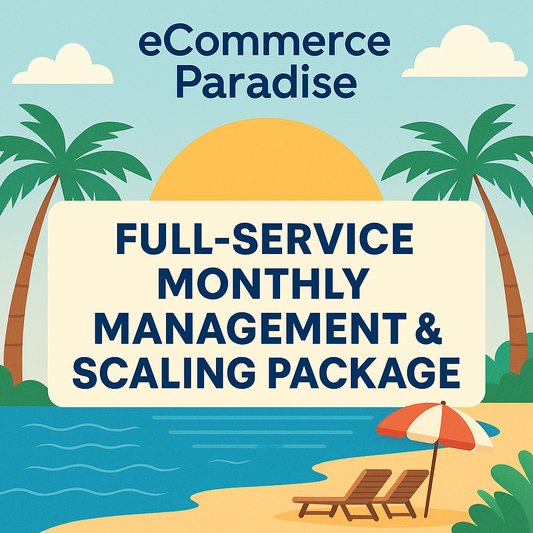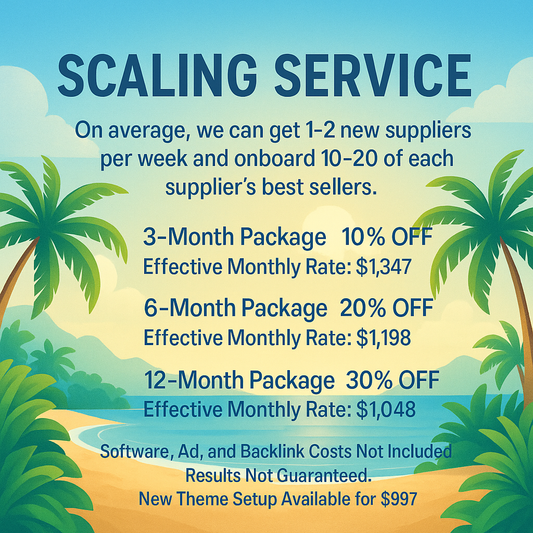
Boost Your Sales: Optimize Product Descriptions for SEO
Hey there, Ecommerce warriors! It's Trevor Fenner from Ecommerce Paradise, and today we're diving into the wonderful world of product descriptions—specifically how to optimize them for search engines. If you’re looking to increase your visibility on Google, drive more sales, and get the most out of your Google Shopping Ads, then this article is tailored just for you. Let’s get started!
Why Product Descriptions Matter for SEO
You might be wondering, "Why should I put so much effort into my product descriptions?" Well, think of them as your personal salespeople working tirelessly around the clock. A well-optimized product description doesn't just provide information; it helps in ranking your products higher on search engines. Here are some compelling reasons to optimize:
- Increased Visibility: Effective product descriptions can improve your position on SERPs (search engine results pages).
- Better Click-Through Rates: Engaging descriptions entice customers to click on your products instead of your competitors’.
- Boost Sales: A well-worded description addresses customer needs, increasing the likelihood of conversions.
Keyword Research: The Foundation of SEO
Before we start writing compelling product descriptions, we need to do our homework. Keyword research is essential in identifying what potential customers are searching for. By utilizing tools like Google Keyword Planner, Ahrefs, or SEMrush, you can discover high-traffic keywords related to your products. Look for keywords with a balance of good search volume and manageable competition. This is where you'll find terms like "Ecommerce SEO," "Google Shopping Ads," and "Dropshipping." Remember, relevance is key!
Crafting Engaging Product Descriptions
1. Know Your Audience
Understanding your target audience is the first step to crafting engaging product descriptions. Who are you selling to? What are their pain points? Tailor your descriptions to address their needs, desires, and interests. If your audience consists of fashion enthusiasts, for instance, focus on style, fit, and trends.
2. Use Clear and Descriptive Language
Let’s face it, nobody wants to read a product description that sounds like a legal disclaimer. Instead, you want your descriptions to be inviting and enticing. Use clear, descriptive language that paints a vivid picture of the product. For example, instead of saying, “This shirt is blue,” you could say, “Experience the calming hue of our ocean-blue shirt, perfect for any occasion.” The latter tells a story that can resonate with visitors!
3. Incorporate Your Keywords Naturally
Now, it’s time to sprinkle some of those golden keywords into your product descriptions. Ensure that your primary keywords appear in the title, headings, and throughout the copy naturally. Google values relevance, so don’t just cram keywords in haphazardly; make them fit seamlessly into the overall narrative.
4. Highlight Unique Selling Points (USPs)
What makes your product stand out from the crowd? Is it handmade, eco-friendly, or made of high-quality materials? Make sure to include your unique selling points in the description. This could be the deciding factor that tips potential customers from indecision to purchase. Remember, your description must resonate with their values and enhance the emotion associated with buying the product.
Formatting for Readability
Online shoppers typically skim content. To make your descriptions easy to digest, utilize formatting techniques such as:
- Short Paragraphs: Break up large blocks of text to keep readers engaged.
- Bullet Points: Use bullet points for key features and benefits, making it easier to scan.
- Bold Text: Highlight important phrases or keywords to catch the reader's eye.
Leveraging Product Videos and Images
Don’t underestimate the power of visuals! High-quality images and videos can complement your written descriptions. They enhance user engagement and can significantly affect conversion rates. Take product photos from multiple angles and consider adding a video that demonstrates how the product works. This not only helps in SEO but also increases the likelihood of a sale!
SEO Meta Tags and Descriptions
Once your product descriptions are as optimized as they can be, don’t forget to work on your meta tags! Your meta title and description play a crucial role in SEO by directly impacting click-through rates. Craft an engaging title that includes your primary keyword and a compelling call to action in the meta description. This small detail can lead to significant changes in your search engine performance.
Implementing Email Marketing to Boost Exposure
Your product descriptions are not just for the website; they can also play a role in your Email Marketing strategies! Consider sending emails featuring your latest products and highlighting enticing descriptions. Use strong subject lines that include some of your targeted keywords to increase open rates. Always remind your subscribers why your products are worth their attention. Engaging descriptions in your emails can convert interest into action, bringing shoppers back to your store!
Monitor and Adjust for Continuous Improvement
SEO isn’t a one-time job; it's an ongoing process. Use analytics to monitor how your product pages perform in terms of traffic, clicks, and conversion rates. Tools like Google Analytics can provide invaluable insight. If a certain product isn’t selling well, revisit the description and think about how you might improve it. This could include adjusting keywords, adding more engaging copy, or incorporating customer testimonials.
The Power of User-Generated Content
Asking customers to leave reviews can boost your SEO and enhance your product descriptions. User-generated content offers authentic social proof, which is incredibly valuable. Not only does it offer fresh content that can integrate keywords naturally, but it also increases trust. Research shows that customers are 12 times more likely to trust online reviews than the product descriptions provided by the company.
Utilize Internal and External Links
Another strategy to optimize your product descriptions is through internal and external linking. Internal links guide users to relevant pages on your store, enhancing their browsing experience and contributing to SEO. External links to reputable sites can boost your credibility in the eyes of search engines. Always make sure that links you provide are valuable to your audience.
Social Media: A Path to Drive Traffic
Don’t forget about the potential of social media for driving traffic to your ecommerce store! Share links to your product pages along with snippets of your optimized descriptions. Use hashtags that align with your keywords like “#EcommerceSEO” or “#GoogleShoppingAds.” Not only does this expand your reach, but it also channels traffic back to your site, giving your products greater visibility.
Wrap Up: Maximize Your Ecommerce Potential!
In summary, optimizing product descriptions is a crucial part of your overall SEO strategy. By investing time and effort into these details, you'll see a significant impact on your traffic and sales. Remember to focus on your audience, use engaging language, and incorporate keywords naturally. Monitor your performance and adjust as needed—this is a journey, not a sprint! Your ecommerce success is just around the corner, and with these fantastic tips, you’ll be well on your way to maximizing your potential!
Until next time, keep hustling, and make those product descriptions shine!


















